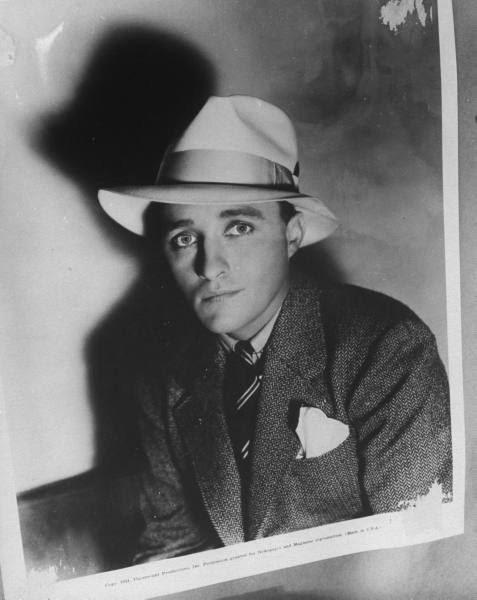At best, fashion follows cycles; at worst, fashion lends itself to faddishness. The leisure suit will always recall the 1970s no matter who dons the polyester costume. Its trendiness made it identifiable to a particular era. Suits should always be timeless, but there are many styles from yesterday that fit and compliment the modern man quite well.
It is key to view vintage clothing as a garnish on top of your specifically suited style. A lot of these old clothes were bought off the rack then and will not translate to style today simply by being old-fashioned. Like anything bought new today, articles made decades ago should measure up to the permanent standards of good style.
Informed Decisions
Before you raid your grandfather’s closet or make the trip to your local vintage store, look over and read up on the style icons of the past. Identify those who resemble your body type and match your personal style. Remember, these men became idols and style icons because they knew the basic rules of dress of the time and pushed forward with their own ideas. This makes wearing vintage clothes not about mimicking the past, but co-opting the past into the current moment.
To wear vintage-inspired suits or vintage accessories assumes the wearer knows his history. If you take history into account when looking at the wide landscape of old-fashioned menswear, the limitations of the articles themselves become obvious. For instance, there are few waistcoats in semi-formal dress today because of the advent of air-conditioning. If you want to step out in a vintage waistcoat, prepare to do some scraping around or find a special (most likely online) retail shop. Let’s take a look at the eras in design and how they correspond to each character and body type of today’s man.
Dressing Optimistically for Hard Times: 1929-1939
How Then Is Right For Now
 Wearing
a bold suit gives the wearer added confidence in uncertain times. This
era gave a lot of credence to the phrase “the clothes make the man”.
Today, many men are seeking to improve their profile in the limited job
market with less income. Menswear of the 1930s adapted to this similar
situation with adaptations that stood the test of bad times as well as
the good.
Wearing
a bold suit gives the wearer added confidence in uncertain times. This
era gave a lot of credence to the phrase “the clothes make the man”.
Today, many men are seeking to improve their profile in the limited job
market with less income. Menswear of the 1930s adapted to this similar
situation with adaptations that stood the test of bad times as well as
the good.Because these clothes are over 70 years old and made of almost exclusively natural fibers and blends, they have been damaged, colorfasted or worn out. My advice for those inspired by the Dirty Thirties is to spare finding actual pieces. If the drape style of the 1930s works well with your body type, look to that fit as an inspiration in a modern suit. If your frame does not correspond to bulkier fittings, stick to accessories like pocket squares, cuff-links and suspenders to give your new suit a vintage touch.
Fits
If you have a tall slender frame, fits from this era should add some needed bulk. At this time, suits were modified to create the image of a large torso. Shoulders were squared using wadding or shoulder pads and sleeves were tapered to the wrist. Peaked lapels framed the v-shaped chest and added additional breadth to the wide shoulders.
Timeless patterns in menswear came from this period. Dark fabrics were enhanced by herringbone and vertical and diagonal stripes. In winter, brown cheviot was popular. In spring, accents of white, red or blue silk fibers were woven into soft wool. The striped suit became a standard element in a man’s wardrobe at this time. Single, double, chalk, wide and narrow stripes were all in demand. Today, these elongating patterns work best with the shorter or larger man.
Accessories
- Pocket Squares- This period made the mandatory finishing touch on any suit. Like a good hair-cut, the pocket square does not draw attention to itself. You will be able to find the standard 16 inch pocket square in a variety of patterns from this era fairly easily at good vintage stores. Icons like Fred Astaire would puff-fold his where the Duke of Windsor “staged” or folded it at an angle.
- Suspenders- The most recognizable accessory of the 1930s are suspenders. The genuine article may be hard to find and the banded elastic may be worse for wear. Suspenders are only an option for pants without belt loops and suspender buttons. Clasped suspenders came later in the 20th Century.
- Formal Hats- The Jazz Age offered several hats. If you are adventurous or an experienced hat wearer, you have your pick on the fedora, derby, or homburg hat. The homburg, with its well-defined rolled brim, is the more popular and versatile of the three. If you stay away from the kitsch hats with feathers and buckles, this accessory will be tasteful with a well fitting suit

No comments:
Post a Comment